How to Build a Single Cell Swappable Power Bank
If you are looking for a flexible and compact energy solution, building a single cell swappable power bank is an excellent option. Unlike traditional power banks, a swappable design allows you to replace individual cells instead of charging the entire unit. This feature is especially useful when managing high-drain devices or when traveling. The core of designing a reliable swappable power bank lies in understanding Amp Hours, as this metric directly determines how much energy a single cell can deliver and for how long. In this comprehensive guide, we will explore how Amp Hours impact performance, safety, and real-world usability while showing you how to assemble a safe and efficient single cell swappable power bank.
- Understanding Amp Hours in Single Cell Power Banks
- Choosing Cells Based on Amp Hours
- Safety Considerations and Amp Hours
- Designing the Swappable Module with Amp Hours in Mind
- Amp Hours and DC-DC Converters
- Assembling Your Single Cell Swappable Power Bank
- Real-World Applications of Swappable Single Cell Power Banks
- Comparing Amp Hours Across Different Cells
- Troubleshooting Common Issues
- Future Trends in Single Cell Swappable Power Banks
- Final Thoughts on Amp Hours and Swappable Power Banks
Understanding Amp Hours in Single Cell Power Banks
Amp Hours (Ah) are a measure of the battery’s capacity. For a single cell power bank, the Ah rating tells you how much charge the cell can store and deliver. For example, a 3.7V 3000mAh lithium-ion cell can theoretically deliver 3000 milliamps for one hour or 1500 milliamps for two hours.
Why Amp Hours Matter
Knowing the Amp Hours of your cells helps you predict runtime for different devices. Smartphones, tablets, and small USB devices each draw current at different rates. A higher Amp Hours rating allows longer use between cell swaps.
Real-World Usable Capacity
It’s important to remember that real-world conditions—such as voltage conversion, temperature, and device load—affect how much of the Amp Hours rating is actually usable. A 3000mAh cell may deliver slightly less energy in practice, but careful planning ensures your power bank meets expectations.
Choosing Cells Based on Amp Hours
Selecting the right cells is critical.
Cell Chemistry and Amp Hours
Lithium-ion and LiFePO4 cells are popular choices. Lithium-ion cells typically offer higher energy density, while LiFePO4 provides better cycle life and thermal stability. Compare Amp Hours ratings to match your device needs.
Balancing Voltage and Amp Hours
Single cells usually have 3.6–3.7V nominal voltage. If your device requires higher voltage, you can connect cells in series. However, for a single swappable cell design, it’s best to focus on maximizing Amp Hours per cell.
>>See also What Is the Lifespan of Batteries in Emergency Lights
Safety Considerations and Amp Hours
Even a single cell with high Amp Hours can be dangerous if mismanaged.
BMS Integration
A small Battery Management System (BMS) protects against overcharge, over-discharge, and short circuits. BMS units are selected based on maximum Amp Hours and expected load.
Thermal Management
Higher Amp Hours often mean more energy packed into a small space, which increases the risk of heat buildup. Make sure your power bank design allows adequate heat dissipation.
Designing the Swappable Module with Amp Hours in Mind
The physical design must accommodate the cell and its Amp Hours capacity.
Modular Holder Design
Create a secure compartment that allows easy removal and insertion. Ensure the cell is held firmly but can be swapped without tools.
Contact Points and Amp Hours Efficiency
Use high-quality connectors to minimize resistance. Poor contacts can waste Amp Hours and reduce efficiency.
Choosing Converters Based on Amp Hours
Single cell power banks often need voltage conversion to 5V USB output.
DC-DC Boost Converters
A 3.7V cell must be boosted to 5V for most devices. The converter must handle current safely according to the Amp Hours rating.
Efficiency Ratings
Look for converters with efficiency above 90% to maximize usable Amp Hours. Lower efficiency means more energy lost as heat.
Assembling Your Single Cell Swappable Power Bank
Step 1: Select Your Cell
Choose a lithium-ion or LiFePO4 cell with sufficient Amp Hours for your intended use.
Step 2: Prepare BMS and Converter
Attach a BMS rated for your cell’s Amp Hours. Connect a DC-DC converter to deliver standard USB output.
Step 3: Build the Enclosure
Design a compact enclosure that allows the cell to be swapped easily while protecting it from short circuits and impact.
Step 4: Test with Small Loads
Before using with expensive devices, test the power bank with LEDs or low-drain devices to verify stability and output.
Step 5: Scale to Higher Loads
Once verified, you can safely charge smartphones, tablets, and other gadgets. The Amp Hours rating will dictate how many full charges are possible per swap.
Real-World Applications of Swappable Single Cell Power Banks
Travel and Outdoor Activities
High Amp Hours allow multiple charges for smartphones, GPS devices, or cameras during camping trips or long flights.
Emergency Backup
Keep a few charged cells ready for sudden power outages. Swapping cells extends availability without needing a wall outlet.
Educational and DIY Projects
Learning about Amp Hours and battery management teaches safe and practical electronics skills for hobbyists and students.
Comparing Amp Hours Across Different Cells
Lithium-ion vs LiFePO4
Lithium-ion cells provide higher Amp Hours for size and weight, while LiFePO4 offers more charge cycles and thermal stability. Your choice depends on whether runtime or longevity is the priority.
Pack Efficiency
Even with a high Amp Hours cell, efficiency depends on wiring, connectors, and voltage conversion. Optimize all components to make full use of the cell’s Amp Hours.
>>See also Can You Safely Use an Old Vape Battery in a Bluetooth Speaker
Troubleshooting Common Issues
Unexpected Short Runtime
Check if the cell’s real-world Amp Hours are being limited by poor connections, inefficient converters, or excessive load.
Overheating
High current draw can cause heat. Ensure that the BMS is rated for the load, and keep the enclosure ventilated.
Voltage Drop
If devices fail to charge fully, your converter may be insufficient. Upgrade to a higher-quality DC-DC module compatible with the cell’s Amp Hours.
Future Trends in Single Cell Swappable Power Banks
Integrated Smart Monitoring
Modern designs may include digital Amp Hours monitoring to show remaining capacity and health.
Modular Expansion
Swappable single cells can be combined in modular packs, increasing voltage or total Amp Hours without changing individual cells.
Eco-Friendly Solutions
By reusing single cells in modular power banks, waste is reduced, and lifecycle Amp Hours are maximized.
Final Thoughts on Amp Hours and Swappable Power Banks
Building a single cell swappable power bank requires careful attention to Amp Hours, safety, and efficiency. Amp Hours dictate how long each cell can power your devices and how often you need to swap cells. Understanding this metric ensures that your power bank performs reliably in travel, emergencies, or daily use. By selecting quality cells, integrating a proper BMS, and using efficient converters, you can create a compact, safe, and highly functional swappable power bank.
Amp Hours are not just a number—they represent the true energy potential of your battery, guiding design choices and ensuring consistent, predictable performance. With careful planning, your single cell swappable power bank can deliver portable energy exactly when and where you need it most, making it a versatile tool for modern life.

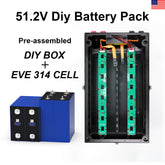

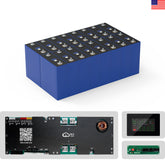

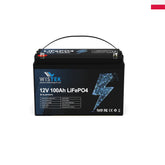
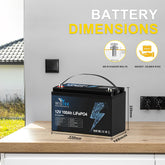
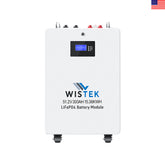
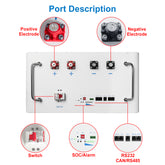
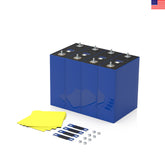
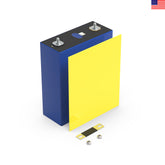
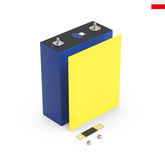

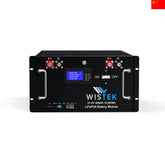
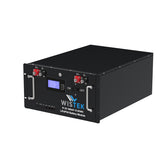
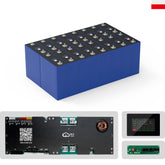








Leave a comment
All blog comments are checked prior to publishing